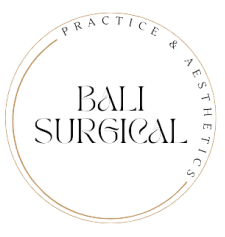Varicose veins and spider veins are common vascular conditions that affect millions of people worldwide. While they are often associated with cosmetic concerns, these vein issues can cause discomfort and lead to more serious health complications if left untreated. Fortunately, there are several treatment options available, and many insurance plans, including Medicare and Medicaid, provide coverage for necessary interventions. In this blog, we’ll explore the treatment options for varicose veins and spider veins, the importance of seeking treatment beyond cosmetic reasons, and how insurance coverage can help alleviate the financial burden.
What are Varicose Veins and Spider Veins:
Varicose veins are enlarged, twisted veins that typically appear blue or dark purple and are often raised above the skin’s surface. They commonly develop in the legs and may cause symptoms such as pain, swelling, heaviness, and cramping. Spider veins, on the other hand, are smaller, web-like veins that can appear red, blue, or purple and are closer to the skin’s surface. While spider veins may not always cause symptoms, they can be unsightly and contribute to self-consciousness.
Why Treatment is Necessary Beyond Cosmetic Concerns:
While many individuals seek treatment for varicose veins and spider veins primarily for cosmetic reasons, addressing these vein issues goes beyond aesthetics. Untreated varicose veins can lead to complications such as:
- Chronic Venous Insufficiency (CVI): Varicose veins can impair blood flow, leading to CVI, a condition characterized by symptoms such as leg swelling, skin changes, and ulcers.
- Thrombophlebitis: Inflammation and blood clots can develop in varicose veins, causing pain and potential complications.
- Skin Problems: Varicose veins may contribute to skin discoloration, itching, and dermatitis, affecting overall skin health and comfort.
- Reduced Quality of Life: Symptoms such as pain, swelling, and discomfort can significantly impact daily activities and quality of life, affecting mobility and overall well-being.
Treatment Options for Varicose Veins and Spider Veins:
Several treatment options are available to address varicose veins and spider veins, including:
- Sclerotherapy: This minimally invasive procedure involves injecting a solution directly into the affected veins, causing them to collapse and fade over time.
- Endovenous Laser Ablation (EVLA): EVLA uses laser energy to seal off varicose veins, redirecting blood flow to healthier veins.
- Radiofrequency Ablation (RFA): RFA utilizes heat energy to close off varicose veins, similar to EVLA.
- Ambulatory Phlebectomy: This outpatient procedure involves removing varicose veins through small incisions in the skin.
- Compression Therapy: Wearing compression stockings can help improve circulation and alleviate symptoms associated with varicose veins and spider veins.
Insurance Coverage for Varicose Vein Treatment:
Many insurance plans, including Medicare and Medicaid, recognize the medical necessity of treating varicose veins and spider veins when associated with symptoms or complications. While coverage may vary depending on the specific insurance plan and individual circumstances, most plans provide coverage for medically necessary procedures deemed appropriate by healthcare providers.
Varicose veins and spider veins are not merely cosmetic concerns; they can cause discomfort and lead to serious health complications if left untreated. Fortunately, there are effective treatment options available, and insurance coverage, including Medicare and Medicaid, can help make these interventions more accessible and affordable. If you’re experiencing symptoms related to varicose veins or spider veins, consult with a healthcare provider to explore your treatment options and determine if insurance coverage is available for your specific needs. Don’t let vein issues hold you back from living a comfortable and healthy life.
